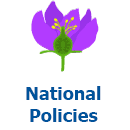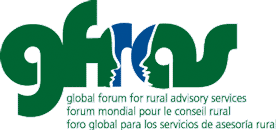 Every country has developed, formulated, and decreed national policies related to rural advisory services. Find some examples here. If you are looking for a national policy from a specific country, please use the search function, selecting the category “National policies” and the tag for the country.
Every country has developed, formulated, and decreed national policies related to rural advisory services. Find some examples here. If you are looking for a national policy from a specific country, please use the search function, selecting the category “National policies” and the tag for the country.

Case Studies (16)
Women’s Empowerment and Child Nutrition: Reducing the Gap with Dairy Cow Rearing
Written by Ingrid OliveiraIn Bangladesh, rural households rear cattle as a component of mixed farming rather than on a truly commercial basis. Like most Asian countries, rural Bangladeshi women extensively participate in livestock management, especially in rearing dairy cows (FAO, 2003; Anderson and Eswaran, 2007; Hashemi et al., 1996; Kabeer 1998) yet society rarely recognizes them as farmers. Consequently, women still receive limited extension services or other support and therefore their contributions to dairy value chains are less than they could be.
Stories From the Field: Improving Nutrition and Livelihoods Through Farmer Field and Life Schools
Written by Ingrid OliveiraMalnutrition is a threat to the wellbeing of vulnerable populations in Eastern Africa. Poor rural households often do not have access to high quality and nutritious foods or they lack a good understanding of improved nutrition habits. Through the UN’s Food and Agriculture Organization (FAO), women and men in the region are now being trained on the nutritious value of locally available foods through the Farmer Field and Life Schools (FFLS).
Stories From the Field: Food and Nutrition Challenges in North-western Kenya
Written by Ingrid OliveiraSecuring food supplies is a struggle some pastoral communities in the Horn of Africa face every day. In the semi-arid north-western region of Kenya, members of the Pokot and Turkana tribes live on two meals per day. FAO REOA and its partners have rolled out the Pastoralist Field Schools (PFS) programme to help improve the food and nutrition security situation, but the local communities are still vulnerable. Cheppurai Lolli and Elizabeth Imuran, both PFS members, share their experiences.
Country Level Programming in Nutrition-Sensitive Agriculture
Written by Ingrid OliveiraThis report presents the findings from the UNSCN’s review on Country Level Programming for Nutrition Sensitive Agriculture, and summarizes the current concept of and evidence base for nutrition sensitive agriculture, as well as provides an overview of cross-cutting gender considerations in programming, namely in regards to how nutrition-sensitive programming can contribute to improved gender equality. Resilience building and nutrition education are also discussed as cross-cutting themes. This work has been made possible through the sponsorship by the Government of CANADA.
The FFS group in Rumonge had just started holding regular meeting sessions, facilitated by a female facilitator trained in the Ngozi TOF. Field activities so far had included establishment of a nursery for vegetables (cabbage, tomatoes, eggplant, amaranths, onion etc.). The group has access to two plots, one right on the shore of a river close to the resident area of members, and another plot on the prison owned land close to the lake shore. Tomatoes production was planned to form the groups learning enterprise, and experimental plots were to be established the following week. The group had a formal structure in place with group officials and FFS sub-groups (all with names and slogans). A majority of members were women and considered vulnerable due to poverty or health status. The group meets weekly on Wednesdays for FFS learning sessions.
Singing the Same Song: Nutrition-sensitive Agriculture Messages in Zambia
Written by Ingrid OliveiraZambia has experienced more than a decade of robust economic growth and stable maize production, yet food and nutrition security has not improved significantly. Over 40% of children under five are stunted (Central Statistical Office, 2015) and 48% of the population is undernourished (FAO/IFAD/WFP 2015). Growing evidence suggests that this seeming paradox may be associated with an overemphasis on production and consumption of the staple crop, maize: roughly 51% of cultivated land is committed to maize, which constitutes 57% of the national diet.
Feeding the Five Thousand: How Junior Farmer Field and Life Schools are bridging the nutritional gap in Kakuma
Written by Ingrid Oliveira“In the last three months, the children have made over ten thousand shillings from the sale of kales, brinjals, spinach, tomatoes, capsicum and carrots to the neighbouring communities. Besides, the school has also been using the same plots to feed the children themselves”, says a proud Ekal Lochi. A teacher at Kalobeyei Boarding Primary School, Mr. Lochi, who is also the JFFLS facilitator at the school, proudly displays the children’s own farm records of the returns of their farming efforts at the school. The profits, he explains, are used for their upkeep in case of sickness and to pay for examinations.
Mainstreaming Nutrition into Agricultural Extension
Written by Ingrid OliveiraLessons Learned from Two Projects that Integrated Agricultural Interventions and Nutrition in Bangladesh
Food and nutrition security exists when all people are able to consume food in both sufficient quantity and quality to meet their dietary needs and food preferences, and they are supported by an environment with adequate sanitation, health services and care, allowing for a healthy and active life (FAO, 1996). Agriculture1 is fundamental to this widely held definition of food and nutrition security. Approximately half of the people of Bangladesh depend on agriculture for their livelihoods as a source of income. Two-thirds of them are women farmers. Most agricultural producers also purchase foods to supplement their home production (GoB, 2011). Despite high level of economic growth in recent years, malnutrition persists in many countries of the South Asian Region. Bangladesh has achieved significant economic growth and poverty reduction, yet continues to battle some of the highest rates of malnutrition in the world (World Bank, 2011). To improve the nutritional status of affected persons in Bangladesh, nutrition specific interventions such as Vitamin A supplementation, food supplementation, and immunization programmes have been in place for many years. Unfortunately, little focus has been placed on the broader resolutions of nutrition through agriculture (including horticulture, fisheries and animal husbandry) that play an important role in reducing undernutrition through food-based approaches as nutrition-sensitive interventions.
Women in Post-harvest Activities: Understanding their Health and Nutrition Behaviour
Written by Ingrid OliveiraBangladesh is a country with mainly paddy-based agriculture, which has managed to triple its rice production since independence in 1971, from 10 million metric tons to over 33.83 million metric tons (Krishi Dairy in Khatun, 2015). 76% of the country’s people live in the rural areas and 90% of them have livelihoods directly related to agriculture (Dev et al., 2014). From this perspective, rural women’s participation in post-harvest activities are one of the most important contributions in agricultural production in Bangladesh. However, in traditional Bangladeshi context, post-harvest work is simply seen as part of women’s household responsibilities; in other words, this work has little monetary value or social recognition. Though this scenario has been changing due to the new technological intervention and frequent market affiliation with rice production and processing, nowadays many women are working in mills (usually called rice mills) as cheap and conventional labour for their livelihood. In this aspect, the aim of this study is to explore the health and nutritional behaviour of rice mill women workers in Narina Union of Shahjadpur.
Engendering Agricultural Extension Services and Agricultural Marketing:
Written by Ingrid OliveiraPromoting Female Headed Households Farmers’ Economic Empowerment for Securing Nutrition
The objective of this research is to incorporate women in extension services to enhance their economic empowerment to secure nutrition in their households. This study was carried out in Manikganj district with the help of Karmojibi Nari. The information was collected from women farmers of FHH, Government extension service officer, Building Resources Across Communities (BRAC) and Karmojibi Nari staff members, the chairman and another member of Manikganj Chamber of Commerce, and a group of community men. We used the in-depth interview method and Focus Group Discussion method as qualitative tools to collect data from the different target groups.
More...
The purpose of this activity was to analyze the ability of Farmer Field Schools (Escuelas de Campo) to integrate gender and nutrition into agricultural extension programs and assess the current status of the Agricultural Extension System (AES) in Honduras. This research directly contributes to the vision of the Integrating Gender and Nutrition within Agricultural Extension Services (INGENAES) initiative by informing project partners and local stakeholders on the potential of Escuelas de Campo as a platform for introducing gender and nutrition integration into agricultural extension programs.
Knowledge, Attitudes and Practices Surrounding Nutrition among Extension Institutions and Their Beneficiaries in Honduras
Written by Ingrid OliveiraIn Honduras, women face high rates of discrimination and lack equal access to resources and services as compared to men. Gender inequality is intimately linked to nutrition, poverty, and agriculture, and all four issues often reinforce one another. For example, greater gaps in gender equality are associated with higher rates of malnutrition. When individuals have poor nutrition, their health and ability to work are affected, leading to lower incomes and reinforcement of poverty. These associations have serious implications on the local and national economy and human rights.
Infusing Agricultural Extension with Nutrition and Gender-sensitive Messages
Written by Ingrid OliveiraA Needs Assessment Report from a Communications Perspective, based on Field Work in Bangladesh
Dr. Lulu Rodriguez and Lea Peck of the University of Illinois’ Agricultural Communications Program were asked to join an interdisciplinary team of students, faculty members and staff of two other universities that visited Bangladesh on behalf of the Integrating Gender and Nutrition within Agricultural Services (INGENAES) project.
INGENAES’ mandate is to assist USAID’s Feed the Future missions to strengthen gender and nutrition integration within agricultural extension and advisory services (EAS). Its stated objectives are (1) to build robust nutrition-oriented institutions, projects and programs capable of assessing and responding to the nutrition needs of farmers and farm families; (2) identify, test the efficacy, and strengthen proven mechanisms for delivering improved EAS to women farmers; (3) disseminate gender-appropriate and nutrition-enhancing technologies and access to inputs to improve women’s agricultural productivity and enhance household nutrition; and (4) apply effective extension approaches and tools to enhance the nutritional status especially of those who reside in rural areas.
Men’s Perceptions of Their Roles and Involvement in Household Decisions around Food in Rural Bangladesh
Written by Ingrid OliveiraINGENAES Case Study
Households include a number of decision-makers who hold varying beliefs about how family members should be involved with food—its purchase, preparation, distribution, consump-tion, and marketing. Households are complex and dynamic systems, involving gender and generational roles influenced by tradition, culture, circumstances, and historical changes. Taking on a household lens is compatible with a systems’ perspective on agricultural develop-ment, such as an agricultural innovation systems framework that incorporates “all the actors in the system and their interactions”, as well as institutions and policies that impact the system and its innovations.

